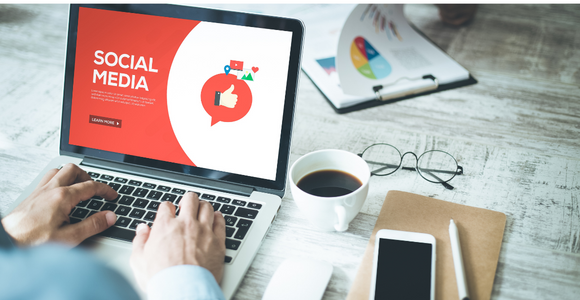What is Social Monitoring?
Social monitoring is the practice of companies looking at their own social profiles on Twitter, Facebook, Instagram, etc. When companies engage in social monitoring, they don’t have the proper lens to obtain the bigger picture they are seeking. This is because they are only viewing mentions on their particular sites or channels. Oftentimes the insight they are seeking occurs off their social media sites and resides in conversations happening in other social media forums. Companies looking at their own social media could get a false sense of security that everything is okay because they’re not looking at all the other areas where opinions are being shared and spread.
Social monitoring sometimes masks the truth because it focuses on only the company’s specific channels and misses their competitors and the comparison conversations that may be happening. This type of conversation often occurs on Reddit when it comes to food, beverage, pharmaceutical, and consumer goods. People often engage in free-flowing, organic conversations that are more accurate expressions of their true thoughts. The “true” consumer expression evades the traditional survey market research method and is often absent from social monitoring.
Listen to our podcast, “What is Social Listening? (and what it isn’t)”:
[optin-monster slug=”epzq33tqcymghbgeskfm”]
What is social listening and why is it important?
Social listening is defined as the practice of collecting and deriving insights from all social mentions no matter where they are occurring online. It uses sophisticated linguistic modeling to locate relevant mentions and conversations occurring anywhere on social media – Twitter, Facebook, Instagram, Tumblr, Tik Tok etc., to analyze a rich social media data set. Social listening provides a clear and objective resource to examine conversation topics, sentiment, and any other category of interest.
Crisis management or reputation management is a good example of social listening. Companies seeking to guard against public relations risk and threats want to intercept and mitigate any negative mentions before they have a chance to go viral.
Verinext analysts bring significant experience and analytical expertise to recognize signals from the never-ending social media noise. When or why something goes viral is difficult to predict, but there is a key equation social listening helps solve.
Check out our white paper: Who is Talking About Your Brand Online? Are You Listening?
AI Is Not Ready For Sentiment Analysis
Sentiment analysis determines how much of the conversation is positive, negative, or neutral. Currently, a lot of sentiment analysis relies on Artificial Intelligence (AI) to analyze posts via algorithms. But AI is only so smart. When it comes to social media posts, people are sarcastic, making jokes, or using slang. The word “sick” has a fairly direct definition, however, the same word used as a slang term means its direct opposite. Consider the phrase, “that snowboard is really sick, dude!” Social listening will categorize this post as positive. However, AI will analyze this post as a negative occurrence.
Similarly, when comparing products or brands it’s not unusual for consumers to offer contrasting opinions within the same mention. A mention with favorable terms towards Coca-Cola and negative terms towards Pepsi would likely confuse AI because it doesn’t take context into consideration. The sentiment of that post depends entirely upon whether your client is Coke or Pepsi.
Completely relying on AI for this segmentation is a bit disastrous. Once you start digging deeper into this type of automatic categorization, you often find that it’s just incorrect. AI will not reveal why the segment is negative, or positive, but social listening will.
Social Listening Process
There are many ways to normalize the collected social listening metrics across all the different platforms. For example, follower count, reach, and impressions are pretty standard metrics across all social monitoring. Content-type, post frequency/recency, and author qualifications/influence are data that must be normalized to provide a more holistic understanding of the broader social landscape for a given brand, product, or industry.
Looking deeply into who a particular follower is providing unique insights into how rapidly chatter can spread. Who are their followers, is the author an educator, or a potential brand ambassador, or, can you dismiss the ravings of an anonymous person with a negative opinion? Social listening takes all this into account to determine the overall background or topic momentum and if there is an alarming situation happening or it is an isolated instance. In addition, knowing where to look and the value of that particular social media platform must be taken into account—because each holds different values. For example:
- Instagram and Tik-Tok are medium-level chatter.
- Reddit is high in engagement, where people are asking questions and sharing their experiences at a rapid pace.
- Twitter is similar to Reddit, with people often sharing and retweeting opinions.
- Facebook can be high engagement, due to the pages that are fully dedicated to a particular condition or product that people are focusing on.
- Tumblr is low engagement and more of a long-form blog, akin to a personal diary entry.
- Pinterest is low engagement, but it does provide valuable information on lifestyle trends and changes as well as insights on food, diet and exercise.
Beware Of The Multi-Agency Noise
Companies often hire many different agencies to create content, copy and place ads. For example, companies may have a separate media placement agency that distributes ads, another agency to create the ad strategy and an additional agency tasked with promoting the content on social media. All these agencies are generating siloed reports on impressions and tone—making it very difficult to determine a clear, overall picture of how the ad is being embraced. Social listening cuts horizontally across these vertical silos to provide an objective evaluation and not skewed to favor a particular agency.
Another advantage of social listening is that obtaining results is fast. A search of keywords on social media can start gathering data immediately and go back as far as 10 years on some social sites. Unlike other traditional marketing research methods, where it takes a while to find the group of participants, gather the data and analyze it, social listening can have a complete dashboard view of the data in just a matter of hours. The process is highly customizable and can turn on a dime to change methodology or update the terms instantly. Simply put, the speed of social listening is a great asset that is often overlooked.
Data derived from social listening is a rich source of information and insights which can be tapped by skilled analysts, who are experts in social media, linguistics, and research methodologies. Anexinet’s social listening analysts have a breadth and depth of expertise across multiple industries, including pharmaceutical, telecommunications, consumer packaged goods, as well as food and beverage organizations.
For more information on social listening check out:






